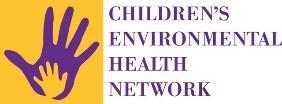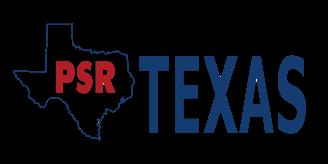































































August 12, 2024
Administrator Michael Regan
U.S. Environmental Protection Agency
1200 Pennsylvania Avenue NW
Washington, D.C. 20004
RE: Approve Pending California Clean Air Programs
Dear Administrator Regan:
The undersigned health and medical organizations call on the United States Environmental Protection Agency (EPA) to authorize pending California clean air programs. EPA’s approval of waivers and granting of authorizations to allow these California-based programs to move forward will help reduce the health harms of air pollution from motor vehicles – not just in California, but in other states as well. Many of the undersigned organizations joined a previous letter urging quick approval of these programs;1 we echo our previous call for immediate attention to the growing list of waiver and authorization requests to ensure these clean air programs and their health benefits are realized without further delay
Despite decades of progress, Californians continue to face the nation’s most difficult air pollution challenges and rely on strong, health-protective measures to continue the path toward healthy air for all communities. According to the American Lung Association’s “State of the Air” 2024, over 90 percent of people in California live in a community with a failing grade for unhealthy levels of air pollution. California cities dominate the lists of the most polluted cities in America, both in terms of ozone (smog) and particle pollution (soot).2 And nationwide, nearly four in ten people live with unhealthy levels of one or both of these pollutants.
These pollutants threaten health and shorten lives. Children, seniors, people with respiratory and cardiovascular illnesses, people with lower incomes and people of color face increased risk to these pollutants. People of color and people with lower incomes too often face elevated local risks due to close proximity of major sources of harmful pollution, including ports, railyards, warehouse operations and other transportation hubs.
Under the federal Clean Air Act, California has the unique authority to adopt and implement policies to clean transportation pollution that are stronger than federal policies, and other states have the option of following these programs. California has recently designed and approved critical programs to achieve the National Ambient Air Quality Standards through robust public processes and has submitted appropriate waiver and authorization requests to EPA. These programs address emission reductions needed from a range of sectors, including lawncare, onroad transportation, locomotives and other off-road transportation applications. Each of these programs supports attainment of health-protective air quality standards, reduces local emission burdens and contributes to achieving state climate pollution requirements.
To protect public health from harmful pollution, EPA must authorize the following California programs to improve and protect health without delay:
1 California health and medical organizations’ letter to US EPAAdministrator Regan. October 2023. https://www.lung.org/getmedia/cafaaafa-32c4-4db3-bd30-6ea0a7872286/Health-Group-Support-Letter-to-EPA-re-CA-Waivers_1031-23.pdf
2 American Lung Association. State of the Air 2024, Most Polluted Cities April 2024. https://www.lung.org/research/sota
• Advanced Clean Cars II
• Advanced Clean Fleets
• Commercial Harbor Craft
• Heavy-Duty Low NOx Omnibus
• In-Use Locomotive
• In-Use Off-Road Diesel-Fueled Fleets
• Small Off-Road Equipment
• Transport Refrigeration Units
Collectively, the implementation of these clean air programs is projected to deliver over $116 billion in health benefits and save over 11,600 lives over the course of the programs in California alone. In addition to these health benefits, these programs will reduce cancer risk in communities within a mile of railyards and ports due to reduced diesel particulate matter emissions from locomotives, freight equipment and marine vessels. Further, cancer risk in highly-impacted communities could be reduced with the transition to cleaner technologies, including over 90 percent reductions estimated near major rail operations3 and up to 72 percent reductions due to zero-emission Transportation Refrigeration Units at grocery stores 4 To the extent that these programs are approved and implemented in other states that have5 or will act to protect their residents, these benefits will increase as reductions occur across the country.
These programs undergo a rigorous process with the California Air Resources Board and US EPA, including public workshops and hearings to gather feedback from stakeholders and community members. EPA must approve authorization without delay to ensure California maintains momentum toward cleaner air for all communities, and that other states can follow these lifesaving standards.
Signed,
Alameda-Contra Costa Medical Association
Allergy & Asthma Network
Alliance of Nurses for Healthy Environments
American Academy of Pediatrics
American Academy of Pediatrics, California
American Academy of Pediatrics, DC Chapter
American Academy of Pediatrics, Maine Chapter
American College of Chest Physicians (CHEST)
American College of Physicians
ACP California Services
American Lung Association
American Public Health Association
Arizona Chapter of the American Academy of Pediatrics (AzAAP)
Asthma and Allergy Foundation of America
Asthma Coalition of Los Angeles County
Breathe California of the Bay Area, Golden Gate and Central Coast
Breathe Southern California
BUDDIGA Family Allergy Asthma & Skin Immunology
California Black Health Network
3 California Air Resources Board Public Hearing to Consider the Proposed In-Use Locomotive Regulation Staff Report: Initial Statement of Reason September 2022. Page 24. https://ww2.arb.ca.gov/sites/default/files/barcu/regact/2022/locomotive22/isor.pdf
4 California Air Resources Board. Public Hearing to Consider the Proposed Amendments to the Airborne Toxic Control Measure for In-Use Diesel-Fueled Transport Refrigeration Units (TRU) and TRU Generator Sets, and Facilities Where TRUs Operate Staff Report: Initial Statement of Reasons September 2021 Figure V-2 at Page 135 https://ww2.arb.ca.gov/sites/default/files/barcu/board/rulemaking/tru2021/isor.pdf
5 California Air Resources Board States that have Adopted California’s Vehicle Regulations. Updated June 2024. https://ww2.arb.ca.gov/our-work/programs/advanced-clean-cars-program/states-have-adopted-californias-vehicle-regulations
California Chapter 1, American Academy of Pediatrics
California Nurses for Environmental Health and Justice
California Pan-Ethnic Health Network
California Society for Respiratory Care
California Thoracic Society
Center for Environmental Health
Children Now
Children's Environmental Health Network
Climate Health Now
Climate Psychiatry Alliance
Health Care Without Harm
Idaho Chapter American Academy of Pediatrics
Illinois Chapter, American Academy of Pediatrics
International Society for Environmental Epidemiology - North America Chapter
Kentucky Chapter of the AAP
LifeLong Medical Care
Long Beach Alliance for Children with Asthma
Los Angeles Chapter - National Association of Pediatric Nurse Practitioners (NAPNAP)
Maryland Chapter, American Academy of Pediatrics
Maternal and Child Health Access
Medical Society Consortium on Climate and Health
Medical Students for a Sustainable Future (MS4SF)
National Association of Pediatric Nurse Practitioners
National Association of Pediatric Nurse Practitioners, San Francisco Bay Area Chapter
National Hispanic Medical Association
National League for Nursing
Nevada Chapter, American Academy of Pediatrics
NHAAP
NYS AAP - Chapter 2
NYS AAP - Chapter 3
Oregon Pediatric Society
OUCH-I
Physicians for Social Responsibility
Physicians for Social Responsibility Pennsylvania
Physicians for Social Responsibility/Maine
Physicians for Social Responsibility/Sacramento
Physicians for Social Responsibility/Texas
Prevention Institute
Public Health Advocates
Public Health Institute
Regional Asthma Management & Prevention
San Francisco Bay Physicians for Social Responsibility
SC Chapter of the American Academy of Pediatrics
St. John’s Community Health
TCC Family Health
The Massachusetts Chapter of the American Academy of Pediatrics
